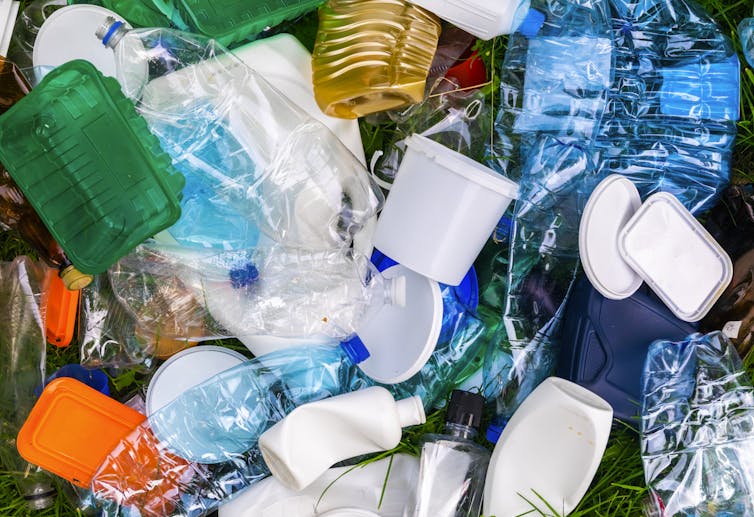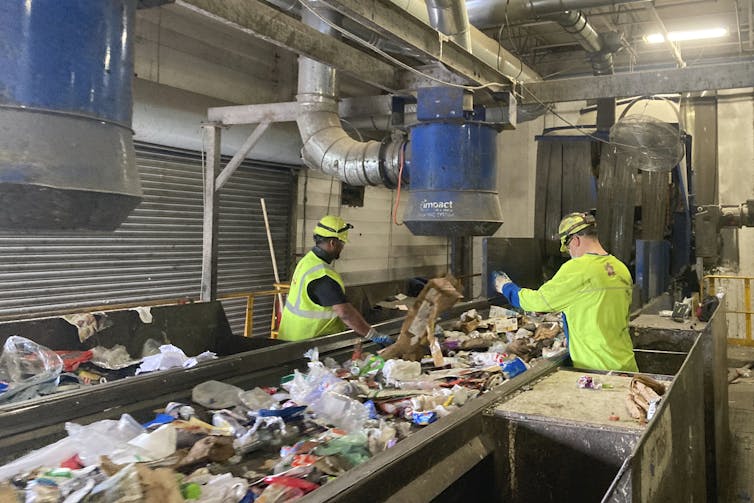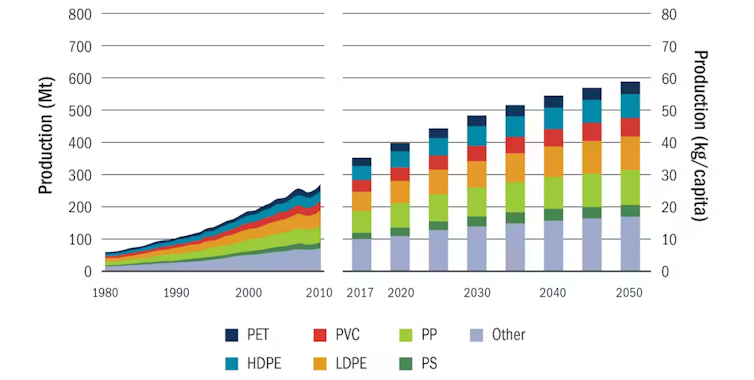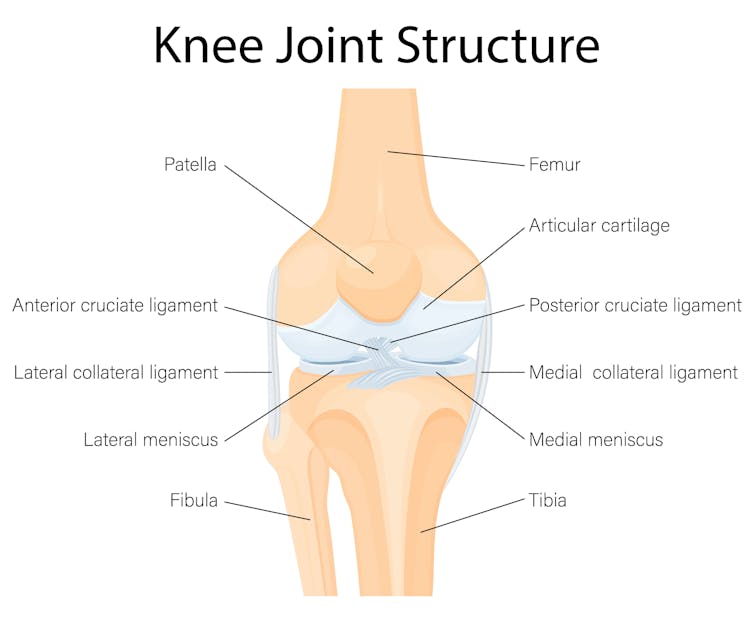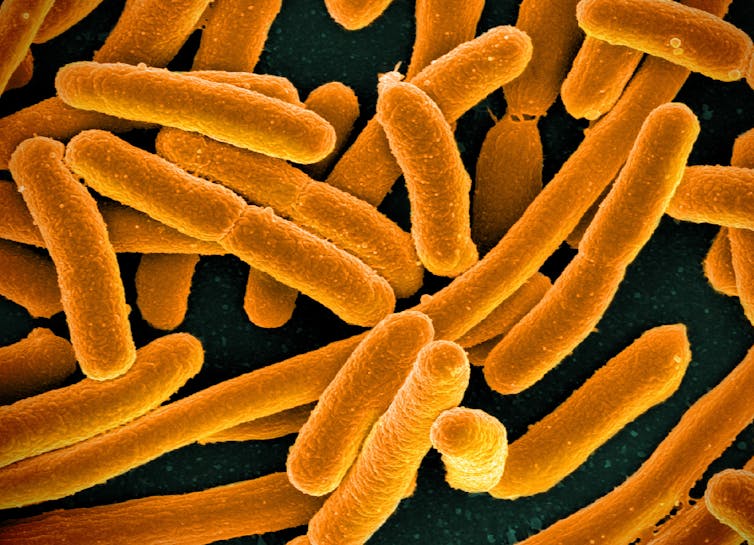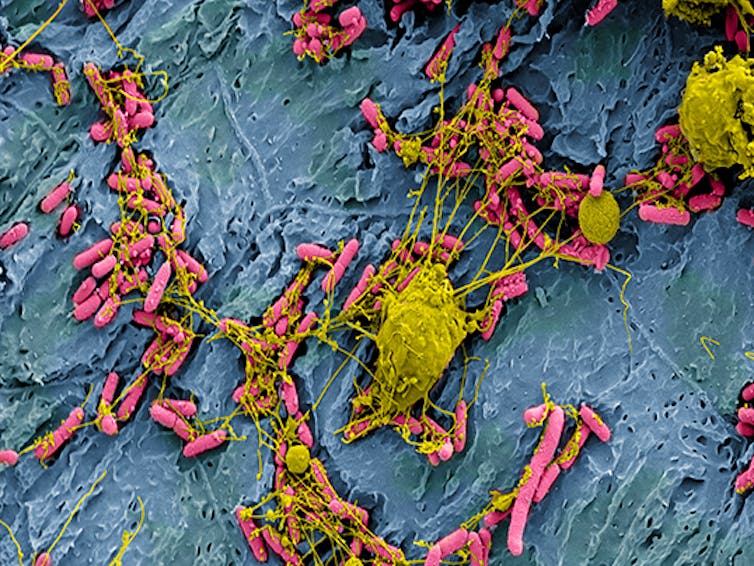This image of a Taurid fireball was taken in 2014 by NASA’s All Sky Fireball Network in Tullahoma, Tenn.
Mark Boslough, University of New Mexico
With the Taurid meteor shower now hitting the night skies worldwide, look for what could be a celestial treat – you might see shooting stars, and maybe even fireballs, the biggest and brightest meteors.
As the full moon begins to wane after Nov. 15, the sky will be darker, due to diminishing moonlight, so finding the meteors will get easier. That said, the best visibility for the meteors through the rest of the month will come just before moonrise each night.
Beyond the light show, there is something else that scientists as well as onlookers have long wondered about: the possibility that bigger chunks are in the Taurid meteor streams, chunks the size of boulders, buildings or even mountains.
And if that’s true, could one of those monster-sized Taurid objects collide with Earth? Could they wipe out a city, or worse? Is it possible that’s already happened, sometime in our planet’s past?
As a physicist who researches the risk that comets and asteroids pose to the Earth, I’m aware that this is a subject where pseudoscience often competes with actual science. So let’s try to find the line between fact and fiction.
Pig Pen, glowing tails and shooting stars
Comet Encke is the so-called parent comet of the Taurid meteors. It’s relatively small, just over 3 miles (almost 5 kilometers) in diameter, and crosses inside Earth’s orbit and back out every 3.3 years.
As Encke moves, it sheds dust wherever it goes, like the Peanuts character Pig Pen. A meteor shower occurs when that dust and debris light up while entering Earth’s atmosphere at high speeds. Ultimately, they vanish into an incandescent puff of vapor with a glowing tail, creating the illusion of a “shooting star.”
But dust isn’t all that breaks off the comet. So do bigger chunks, the size of pebbles and stones. When they collide with the air, they create the much brighter fireballs, which sometimes explode.
An image of comet Encke, taken by NASA’s MESSENGER spacecraft in November 2013.
Doomsday showers
The “coherent catastrophism” hypothesis suggests that comet Encke was created when an even larger comet broke up into pieces; Encke survived as the largest piece. The hypothesis also suggests that other mountain-sized chunks broke off and coalesced into a large swarm of fragments too. If such a swarm exists, there is a possibility that those large chunks could one day hit Earth as it passes through the swarm.
But just because something might be physically possible doesn’t mean that it exists. Mainstream astronomers have rejected this theory’s most catastrophic predictions. Among other reasons, scientists have never observed high concentrations of these mountain-sized objects.
Despite the lack of evidence, researchers on the fringes of science have embraced the idea. They claim the Earth experienced a global catastrophic swarm 12,900 years ago; the impact, they say, caused continent-wide firestorms, floods and abrupt climate change that led to the mass extinction of large mammals, such as woolly mammoths, and the disappearance of early Americans known as the Clovis people.
The evidence for a catastrophic cause of these events, most of which did not happen, is lacking. Nevertheless, the idea has gained a large following and formed the basis for British author Graham Hancock’s popular TV series, “Ancient Apocalypse.”
This photo shows the flattened trees resulting from the Tunguska event. Universal History Archives/Universal Images Group via Getty Images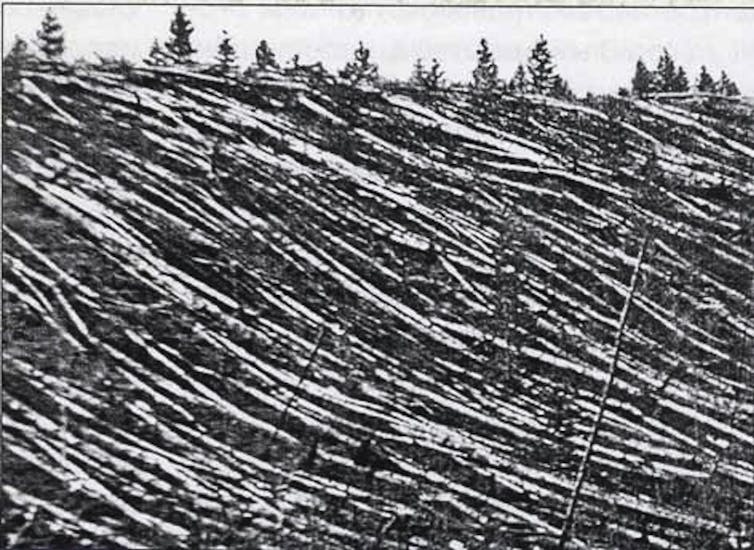
The Tunguska event
But even outlandish ideas can have elements of truth, and there are hints that some objects – more than just dust and debris, but less than doomsday size – indeed exist in the Taurid meteor stream, and that the Earth has already encountered them.
One clue comes from an event on June 30, 1908, when an enormous explosion in the sky blew down millions of trees in Siberia. This was the Tunguska event – an airburst from an object that may have been up to 160 feet (about 50 meters) in diameter.
The collision unleashed several megatons of energy, which is roughly the equivalent of a large thermonuclear bomb. What happens is this: The incoming object penetrates deep into Earth’s atmosphere, and the dense air slows it down and heats it up until it vaporizes and explodes.
Could this object have been a Taurid? After all, the Taurids cross Earth’s orbit twice a year – not just in autumn, but also in June.
In a 2015 photo, a glowing Taurid fireball descends over Lake Simcoe in Ontario, Canada.
Here’s the evidence: First, the descriptions of the trajectory of the Tunguska airburst, as reported by eyewitness observers, is consistent with that of an object coming from the Taurid stream.
What’s more, the pattern of blast damage on the ground beneath an airburst depends on the trajectory of the exploding object. Supercomputer simulations show that the shape of the surface blast that would be caused by an exploding Taurid object matches the pattern of fallen trees at Tunguska.
Finally, during the Taurid meteor shower in 1975, people observed large fireballs – and seismometers, previously placed on the Moon by Apollo astronauts, detected seismic events on the lunar surface. Scientists interpreted those events as impacts, presumably made by the Taurid meteors.
In 2032 and 2036, the Taurid swarm – assuming it exists – is predicted to be closer to the Earth than any time since 1975. That might mean the Moon, and perhaps the Earth, could be pelted again in those years.
There is time to figure this out. Scientists can expand their astronomical surveys to look for Tunguska-sized objects at the locations where they are predicted to be the next time they are in our vicinity.
Most scientists remain skeptical that such a swarm exists, but it’s the job of planetary defenders to investigate possible threats, even if the risk is small. After all, a Tunguska-sized object could conceivably demolish a major city and kill millions; an accurate count of objects on a potential collision course is essential.
Put doomsday scenarios and ancient apocalypses aside. The real question, and still an open one, is whether a Taurid swarm could deliver more Tunguska-sized objects than would otherwise be expected. This would mean we have underestimated the risk from future airbursts.![]()
Mark Boslough, Research Associate Professor of Earth and Planetary Sciences, University of New Mexico
This article is republished from The Conversation under a Creative Commons license. Read the original article.
